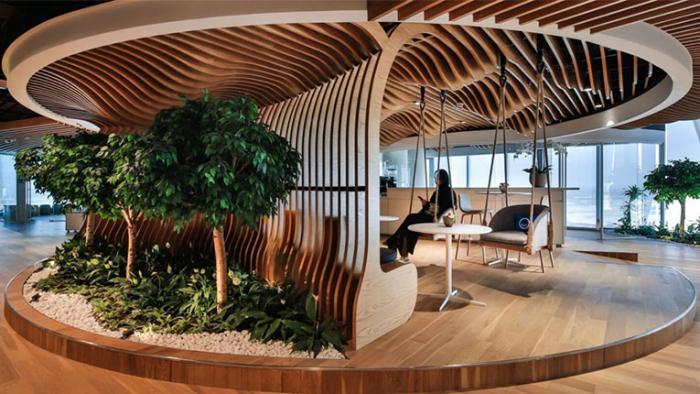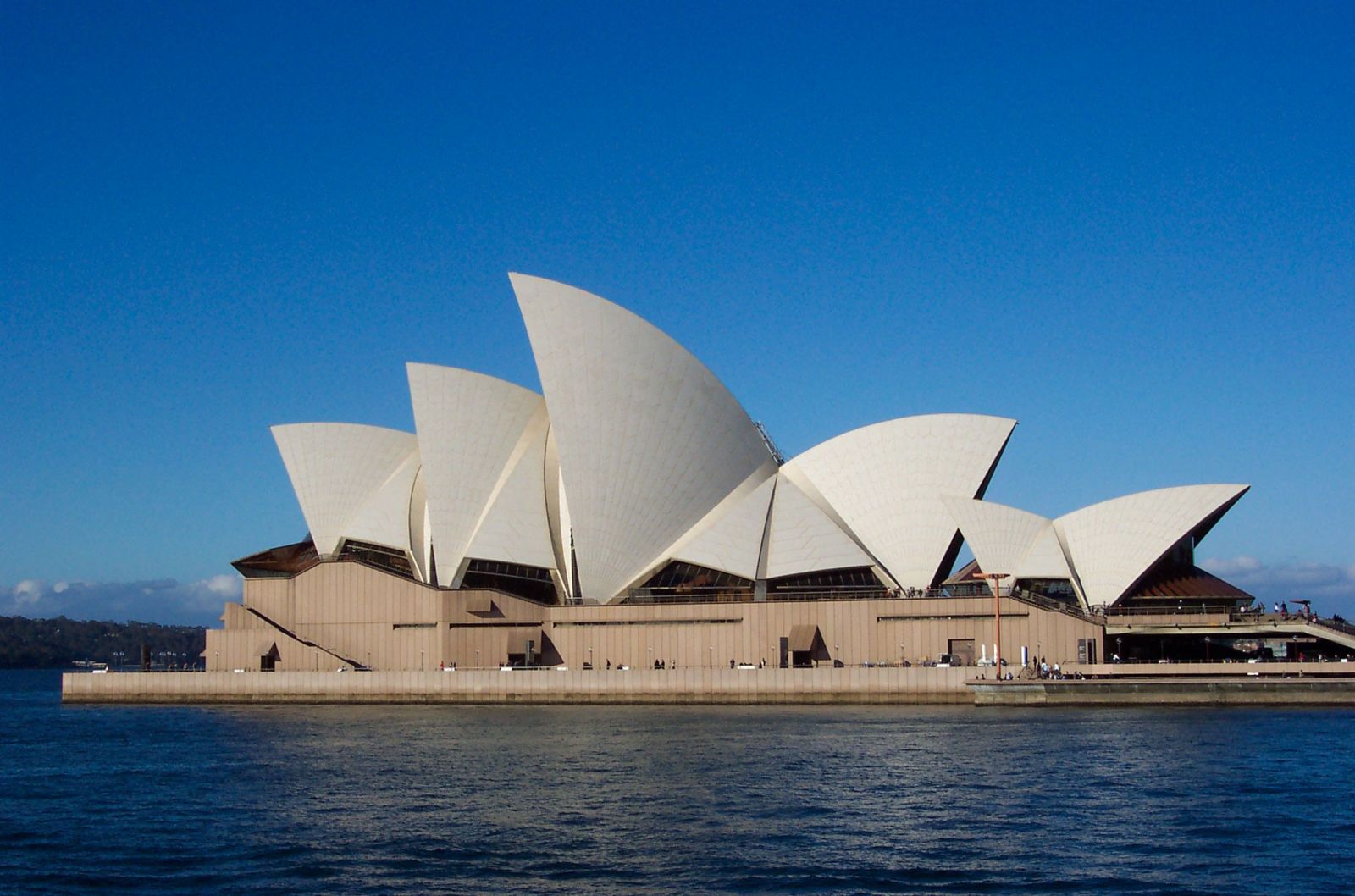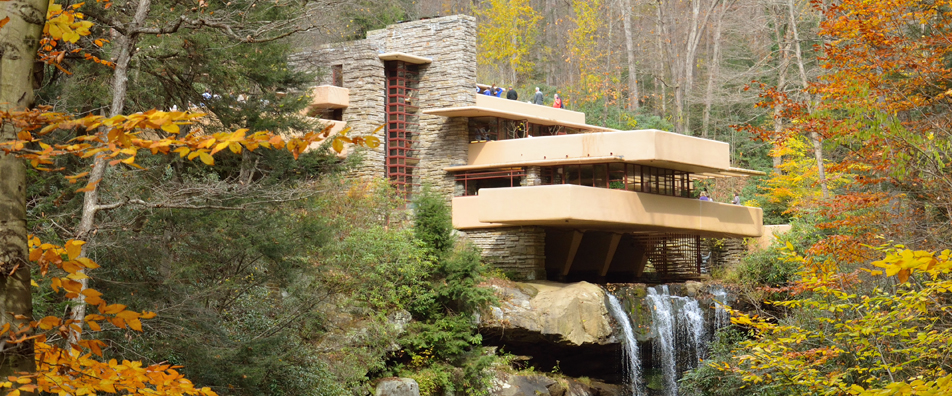Biophilic Design - Bringing Nature Back into the Built Environment


In ancient Greek and Roman architecture, open-air courtyards functioned as the center of the home complete with gardens, fountains, and sculptures. The courtyard, or peristyle as it was known, provided a calming respite with fresh air, natural light, and views of nature. However, few homes or workplaces are built around such secluded open air oases nowadays. In fact, they are usually built to protect and separate us from the outdoors and natural elements. But it turns out, that our exposure to nature and natural concepts can play an essential role in how calm or happy, and even productive humans can be in a built environment.
This happens because nature opens our senses of sight, hearing, taste, and smell and touch. When these senses are stimulated, they can ease our stress and tension, help us to relax and to think more clearly. Being in nature can be uplifting for our moods, refreshing for our physical energy and vitality, and rejuvenating for our emotions. However by 2050, 68% of the world’s population is projected to live in cities and according to a study sponsored by the Environmental Protection Agency, the average American spends 93% of his or her time indoors. So it is clear by any standard, that the majority of the population is likely not getting the benefits of nature.
You may have heard the terms “biophilia” or “biophilic” design used as a response to the above astonishing statistics. What do they actually mean and how does one go about incorporating these concepts into building designs? Whether your design goals are simply aesthetic, to benefit the health of a building’s occupants, or a little of both, here’s a small introduction.
The term ‘biophilia’ was coined in the early 1980s by biologist Edward O. Wilson, who theorized that humans are biologically drawn to nature, the proximity of which helps their overall wellbeing. Applied to architecture, it’s a way to mitigate the effect of spending the larger part of our lives indoors, by bringing aspects of the natural world into where we live and work.
The concept may sound unfamiliar, but you have probably seen examples everywhere. The iconic design of the Sydney Opera House is meant to evoke the movement of waves and massive sails, maintaining the nautical theme inherent in its location on the harbor.

This concept isn’t new by any means - as demonstrated by the Greeks and Romans, or the Hanging Gardens of Babylon, constructed between 605 and 562 BCE, over 2,600 years ago.

In relatively recent times, there’s Frank Lloyd Wright’s “Fallingwater” constructed in 1937 - a house in southwestern Pennsylvania that incorporates not only the surrounding forest but a waterfall into the architecture of the building.

You may have guessed that there’s more to biophilic design than increasing the number of potted plants in your office. And you would be right - biophilic design is an innovative way of arranging the places that we inhabit, in a manner that includes natural materials, natural light, vegetation, nature views and other experiences of the natural world, into the modern built environment. This is in opposition to the conventional arrangement of spaces, in ways that alienate us from the natural environment. Biophilic work spaces can emulate the benefits of nature listed above, by providing an enhanced sense of wellbeing and stress reduction in the workplace. While studies have demonstrated this, it’s more than likely you have felt these effects too in a myriad subtle ways.
The direct experience of nature in biophilic spaces means that the occupants are exposed to:
-
Natural light which allows occupants of an office building or home to be familiar with the time of day and season. Biophilic spaces with natural light make for less boredom, fatigue, listlessness and a sense of freedom while non biophilic spaces can tend to make occupants feel contained and restricted. Light can be integrated through the use of skylights, glass, atria and reflective materials. Have you ever noticed how an office with windows is almost always more desirable than one without? Or that malaise when you’ve been inside so long you have no idea if it’s getting dark out?
-
Water can be used in buildings to provide multisensory input through sounds, touch, and sight. In design, it can be incorporated through water bodies and fountains. Humans, in general, have a strong connection to water and it can decrease stress, promote calmness and increase performance, and overall satisfaction. The sound of running water has been long associated with serenity. This may be why there are a growing number of apps, one can download, that will help you relax or fall asleep to the pitter patter of raindrops or a bubbling brook.
-
Greenery and vegetation provide a direct connection to nature and if used abundantly, will increase physical health, performance, productivity and stress reduction. Walls covered with green creepers and flowering potted plants can be a powerful tool in creating refuge spaces for solitary inspiration, group meetings or lunchtime retreats.
-
Air can improve ventilation, temperature, and humidity and can provide a feeling of refreshment. The use of windows, which may be opened at certain times of the year, can lend a sense of control and ownership which in turn will fuel inspiration and productivity. Taking it a step further, open air work areas, such as on a rooftop or deck would serve the same purpose. There’s a reason for the advice “get some fresh air.”
It’s not always possible to get the real thing, but the indirect experience of nature through images or other representations, can also be beneficial:
-
Natural materials such as wood, stone, and organic fabrics can contribute to mental and sensory stimulation. Such elements are susceptible to the patina of time and the resulting changes can invoke calming responses in human beings, who are innately tuned to the passage of time. For example, when a building interior has exposed wood or a wood veneer, it’s often automatically labeled ‘cozy’ or somehow more welcoming as opposed to concrete, iron or plastic.
-
Natural colors or “earth-tones” refer to subdued tones of yellows, browns, greens, and blues, often known as a muddy palette. Earth tones are calming and bright colors are usually distracting or at the very least, too stimulating. When you’re stressed out, which decor is more likely to give you a headache - dark, forest green or blazing neon pink?
-
Simulations of natural light and air, in areas where their real counterparts are unavailable, can be achieved with the creative use of interior lighting and mechanical ventilation.
-
Organic shapes and forms can be achieved by architectural design to transform a static space into an appealing complex area. Biomorphic patterns that replicate contours, patterns, textures or numerical arrangements that are found in nature can be surprisingly comforting to the human eye. Ever felt drawn to one of those slightly quirky spaces in a room or complex? It may be because the space reminds you of natural arrangements or markings.
Essentially, the richness of information conveyed by a space that unconsciously reminds you of the outdoors can evoke curiosity and comfort in occupants. Many ecosystems are filled with different abiotic and biotic elements; including these or simulating them in buildings will invoke a similar response that occurs in humans, as a walk in the woods.
With more people living in cities than in the countryside, the need for building designs that affiliate people with a sustainable experience of nature becomes ever more crucial. You may not be able to get out into nature for a hike as often as you would like, due to work and home pressures, or maybe you just don’t like hiking. But an office building with biophilic features built into it could take the edge off the 9 to 5 grind. Biophilic design shouldn’t be considered a luxury, but a necessity for our health and well-being. You don't have to live and work in a tree house or a cave dwelling to be part of nature; you simply have to be aware that we are living organisms in a natural ecosystem, that nature is an essential ally and to let it into our lives, by whatever means possible.
For further reading, check out:
14 Patterns of Biophilic Design
Biophilic Design: What is it? Why does it matter? And how do we use it?
Biophilic Design - connecting with nature to improve health and well-being
What is and is not biophilic design?
- Filed Under: Green Living
- ( 28768 ) views

Master's in Media Innovation from Northeastern University Freelance journalist and blogger
- ( 0 ) Ratings
- ( 0 ) Discussions
- ( 0 ) Group Posts
Reply/Leave a Comment (You must be logged in to leave a comment)
Thanks for this article. I agree that the synergies between Nature and the built environment are valuable for our health and wellbeing. In addition, if we stop treating the buildings and communities we design as barriers between us and Nature, we will all do much better. We can make more adapotive and flexible choices.
We are Nature, after all.
Connect with us!
Subscribe to our monthly newsletter:
 Greenbuild Report Out, 2025 Nov 12, 2025
Greenbuild Report Out, 2025 Nov 12, 2025





























Not a Member Yet? Register and Join the Community | Log in